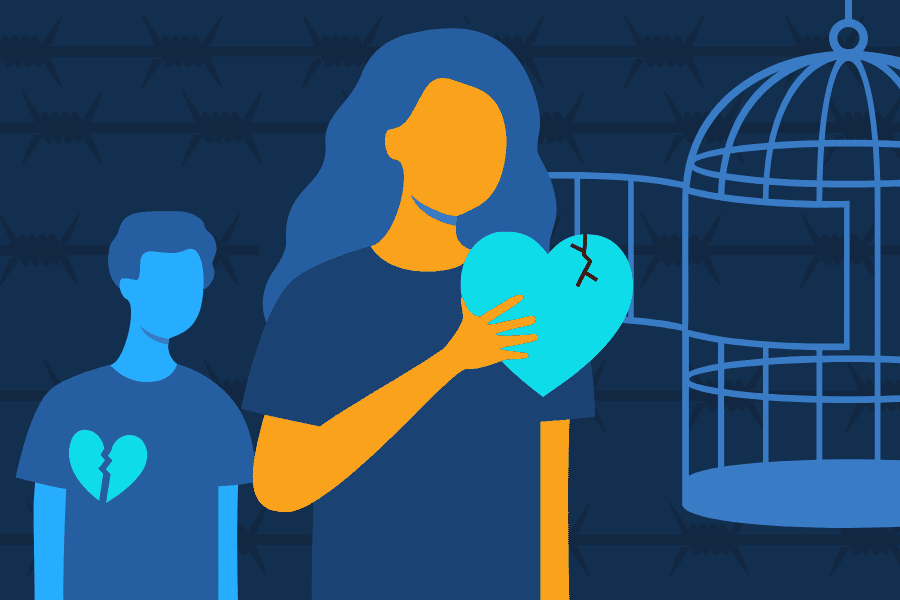Avoidant Attachment Style Definition
What Is an Avoidant Attachment Style?
Avoidant attachment style is when an individual tends to avoid emotional intimacy and instead works very hard to be as self-sufficient and independent as possible, according to attachment theory.
In many cases, those with an avoidant attachment style have a fear of being dependent upon other people.
This kind of pattern is often connected to deep mental or emotional roots that may go back to early childhood.
For example, someone might develop this way of thinking if their parents were dismissive or not emotionally available to them while they were growing up.
Having an avoidant attachment style can lead to challenges in adulthood, particularly when trying to create and maintain healthy romantic relationships?
The good news is that through therapy and self-awareness, it is possible to overcome this kind of pattern and take back control of your own emotions.
If you believe that you are struggling with an avoidant attachment style, our team at Sandstone Care can help.
What Causes an Avoidant Attachment Style?
Many factors may play into an avoidant attachment style, but one of the most common causes is that the individual’s parents or caregivers were emotionally distant or emotionally unavailable.
When a child’s well-being or emotional needs are not met by their primary caregivers, they will begin to think that showing their emotions is bad.
They will become used to not getting emotional support and will try their best not to need emotional closeness from their loved ones. As time goes on, they may have trouble expressing emotions due to fear of rejection.
In some cases, a child’s parents might not be emotionally unavailable but may be particularly strict or hard on them.
For example, they may push them to be independent even as a young child. As a result of these childhood experiences, the individual may grow up believing that being dependent upon other people or allowing themselves to show vulnerability is a bad thing.
In other cases, a child’s parents may discourage emotional expression and may even lead their children to believe that showing emotion is a sign of weakness.
They may even mock their child for crying or showing signs of vulnerability. This can lead the child to grow up hiding their emotions, even from those who should be the closest to them.
Another scenario that could lead someone to develop an avoidant attachment style is a lack of affection beginning at a young age.
This doesn’t have to just be a lack of physical affection. It could also be a lack of expression of affection, for example, rarely being told “I love you” by other people.
What Are the 7 Traits of Avoidant Personality Disorder?
In psychotherapy, there are typically 7 core traits that are associated with those who have an avoidant personality disorder.
They can be described as:
1. Wanting to avoid social events as much as possible
2. Being extremely sensitive to criticism and having a fear of rejection
3. Having low self-esteem or a very poor perception of one’s self
4. Not wanting to take risks or try new things due to fear of failing or embarrassing oneself
5. Constantly worrying about what others may think about them and whether they are liked
6. Being afraid or hesitant to form close relationships with other people due to fear or rejection
7. A desire for intimate relationships or social connection but being afraid to pursue these things.
How Common Is Avoidant Attachment Style?
Avoidant attachment style is more common than you might think with around 22% of adults claiming they experience it.
Avoidant Attachment Style Symptoms
What Are the Symptoms of Avoidant Attachment Style?
In general, an avoidant attachment style usually presents itself in someone by causing them to not want or to be afraid to form deep connections with other people.
Some other common symptoms that people with an avoidant attachment style may experience could include:
- Seeming emotionally detached or having trouble expressing one’s emotions
- Not being comfortable asking other people for help
- Preferring to be self-reliant and independent
- Not feeling comfortable being dependent upon other people
- Being uncomfortable with physical contact
- Struggling to form and maintain healthy relationships with other people
- Having trouble opening up or expressing affection to romantic partners
- Seeming to avoid emotion rather than confronting it head-on
- May seem to push people away if they feel like they are getting too close to them emotionally
- Seeming to withdraw from others socially
- Having trouble being vulnerable, even around those they should be closest to
Because people with an avoidant attachment style may tend to struggle to maintain healthy adult relationships, they may struggle with mental health problems like anxiety or depression. They may even turn to substance use to cope.
What Does an Avoidant Attachment Style Look Like?
Avoidant attachment style looks different depending upon the person and the type of relationship in question. However, there are some common signs of avoidant attachment to look out for.
For example, in the case of a romantic relationship, someone with an avoidant attachment style may seem to prefer casual dating instead of forming a deeper connection.
This may be because they are afraid of becoming too close to their partner or reaching a point where they are dependent upon them emotionally. They may even pull away from their partner if they think their relationship is getting to a point where it is “too serious.”
In the case of a friendship, someone with an avoidant attachment style may have only surface-level friends but not many deep friendships.
They may struggle to form stronger connections with friends because of their fear of being vulnerable or sharing their emotions. If they have a friend who needs emotional support, they may struggle to know how to be there for them.
In the case of a work setting, someone with an avoidant attachment style may struggle to work with coworkers as a team and prefer working independently.
They may struggle if they get any form of criticism from their boss and obsess over how they are perceived. They may seem unfriendly or socially distant even if they aren’t intending to come off that way.
Can You Have Anxious and Avoidant Attachment Style?
Yes, you can have both an anxious and an avoidant attachment style.
Anxious-avoidant attachment often occurs when an individual wants to form a connection with another person but is afraid to because they don’t want to get rejected. This is sometimes called a “fearful avoidant attachment.”
At the same time, they may also exhibit signs of avoidance or pushing people away when they feel like they are becoming too close to them. This usually happens because they are afraid of emotional intimacy.
In many cases, these fears are related to experiences dating back all the way to the early years of a person’s life.
Avoidant Attachment Style Dating
How Do Avoidants Act in Dating?
People with an avoidant attachment style often really struggle in dating because they prefer to be independent and may not feel comfortable opening up and being vulnerable with a romantic partner.
The partner of someone with an avoidant attachment style may doubt if their feelings are being reciprocated. This can be because their partner may seem emotionally distant and may even withdraw from them at times.
They may also seem dismissive of their partner’s emotional needs, which can cause serious problems in the relationship.
If someone doesn’t have an avoidant attachment style themselves, it can be difficult to understand why their partner may be behaving this way. It can make them feel as if their emotional needs aren’t being met and they’re not being fulfilled within the relationship.
It may seem extremely difficult to communicate openly and honestly with their partner, making it very challenging for the relationship to move forward.
Who Attracts Avoidant Attachment Style People the Most?
It is often people who have an anxious attachment style that attract those with an avoidant attachment style.
The relationship between these two people can become a delicate balance. On one hand, the person with anxious attachment wants emotional closeness with their partner.
However, on the other hand, the person with an avoidant attachment style may withdraw from their partner because they don’t like being vulnerable.
Why Is Dating an Avoidant So Hard?
Dating an avoidant can be really difficult because they often don’t like to express their emotions and prefer independence.
This can make it hard to get close to them. As a result, their partners can begin to feel lonely and unwanted.
They may feel like their needs aren’t being reciprocated and like they’re the only ones putting any effort into the relationship with their avoidant partner.
Some partners may even avoid affection or eye contact, which can make it feel difficult to connect during difficult conversations.
However, by working with a mental health professional or a relationship coach, it is possible to form a healthy relationship with someone who has an avoidant personality.
What Triggers an Avoidant to Pull Away?
In many cases, it is emotional intimacy, vulnerability, and a fear of commitment that may make an avoidant pull away from others in their life.
How to Date Someone With an Avoidant Attachment Style?
When dating, you have to be willing to understand the needs of someone with an avoidant attachment style and the fact that their attachment system may be different than your own.
Patience is key when building an emotional connection with someone with an avoidant attachment style. It is important not to push them too far, to give them space when they need it, and to communicate with them as openly and honestly as possible.
It is also important to remember that people exhibit different attachment patterns for different reasons.
There may be a complex reason that your partner behaves this way that could be related to experiences they had many years ago.
Educating yourself about social psychology and different adult attachment styles can help to increase your understanding and even help you to have more compassion for your partner.
Be sure to use reliable sources when you are learning about attachment styles, many voices on the internet and social media have content on the subject, but not all of them are well researched.
How to Meet the Needs of an Avoidant Attachment Style?
To meet the needs of someone with an avoidant attachment style, you should respect the fact that they may need their space at times and that they value their independence.
It is important to build an emotional connection with this person slowly, over time, and with a lot of patience.
Trying to force someone with this kind of attachment style to open up too soon can make them uncomfortable and may cause them to want to pull away.
Avoidant Attachment: How To Heal
Can Avoidant Attachment Be Healed?
Yes, avoidant attachment can be healed through self-awareness and therapy.
Working with a mental health professional can help you to get to the bottom of why you may behave this way.
From there, you can work on different strategies to help you heal and form healthier and stronger relationships with other people.
How to Overcome Avoidant Attachment Style
It’s important to address what may have triggered your development of this attachment style such as an experience that happened in childhood.
By working with a therapist and those closest to you, you can identify why you may struggle with vulnerability or emotional closeness. Over time, you can become more comfortable opening up to others and expressing your emotions.
How to Heal an Avoidant Attachment Style?
To heal an avoidant attachment style, you have to be willing to become self-aware and work consistently on developing a healthier and more secure attachment with those closest to you.
How to Help an Avoidant Attachment Style?
You can help someone with an avoidant attachment style by providing them with a safe space where they can feel comfortable opening up to you if they want.
At the same time, you should never try to force them to share more than they are comfortable with.
Patience, respect, and compassion are all key things to keep in mind when building a relationship with an avoidant attachment style.
What Is the Best Therapy for Avoidant Attachment?
Cognitive behavioral therapy (CBT) is a great treatment option for those trying to overcome an avoidant attachment because it helps them to identify negative thoughts, patterns, and behaviors they may have and replace them with more positive ones.








